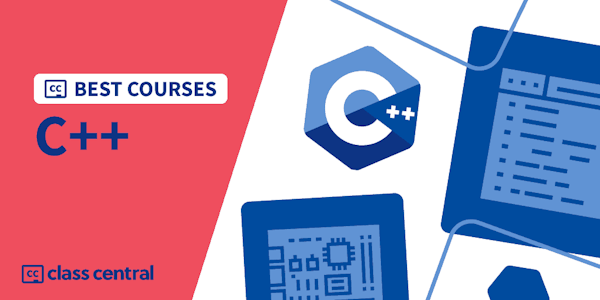Identifying Security Vulnerabilities in C/C++Programming
University of California, Davis via Coursera
-
496
-
- Write review
Overview
Class Central Tips
This course builds upon the skills and coding practices learned in both Principles of Secure Coding and Identifying Security Vulnerabilities, courses one and two, in this specialization. This course uses the focusing technique that asks you to think about: “what to watch out for” and “where to look” to evaluate and ultimately remediate fragile C++ library code.
The techniques you’ll be examining will make your programs perform accurately and be resistant to attempts to perform inaccurately. This is really what the term secure programming means. You will be shown common errors that people make, and then learn how to program more robustly. You will apply tips and best practices to help you improve your programming style and help you to avoid common problems like buffer overflows, which may or may not cause security problems.
Syllabus
- Users, Privileges, and Environment Variables
- In this module, you will be able to manage users and privileges when you run programs or sub-programs. You will be able to identify and use the different types of privileges on a Linux (and UNIX-like) system. You'll be able to identify how program shells preserve environment settings. You will be able to examine how your shell (or other program that uses the PATH variable) deals with multiple versions of that variable.
- Validation and Verification, Buffer and Numeric Overflows, and Input Injections
- In this module, you will be able to breakdown how the process of checking inputs, known as validation and verification works. You will be able to avoid and buffer numeric overflows in your programs. You will be able to discover what happens when you call functions with parameters that cause overflows. And finally, you will be able to detect various input injections such as cross-site scripting and SQL injections and be able to describe the consequences of not examining input.
- Files, Subprocesses, and Race Conditions
- In this module, you will be able to describe how files and subprocesses interact and be able to create subprocesses and shell scripts. You will also be able to identify and prevent race conditions in your programs and practice cleaning out environments to make them safe for untrusted subprocesses.
- Randomness, Cryptography, and Other Topics
- In this module you will be able to distinguish between pseudo-randomness and actual randomness. You will be able to apply randomness in the coding environment and generate random numbers and look at their distribution. You'll be able to identify and describe how and why cryptography is used, as well as why you should use trusted cryptography code libraries instead of crafting your own solution. You will be able to analyze and consider best practices for handling sensitive information, passwords, crypto keys, how to handle errors in security sensitive programs, and how to defend against string attacks. You will be able to hash a password and then try to guess another one. You will be able to practice cleaning out environments to make them safe for untrusted subprocesses, as well as practice handling integer overflow.
Taught by
Matthew Bishop, PhD





